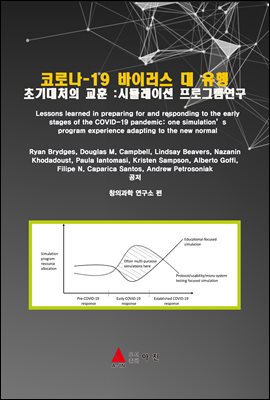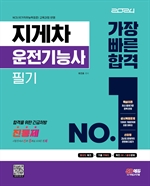
코로나-19 바이러스 대 유행 초기대처의 교훈 : 시뮬레이션 프로그램연구
- 저자Ryan Brydges, Douglas M. Campbell, Lindsay Beavers, Nazanin Khodadoust, Paula Iantomasi,외
- 출판사아진
- 출판일2020-07-12
- 등록일2020-12-21
- SNS공유


- 파일포맷PDF
- 파일크기6MB
- 공급사YES24
-
지원기기
PC
PHONE
TABLET
프로그램 수동설치
전자책 프로그램 수동설치 안내
아이폰, 아이패드, 안드로이드폰, 태블릿,
보유 1, 대출 0,
예약 0, 누적대출 6, 누적예약 0
책소개
Use of simulation to ensure an organization is ready for significant events, likeCOVID-19 pandemic, has shifted from a “backburner” training tool to a “first
choice” strategy for ensuring individual, team, and system readiness. In this
report, we summarize our simulation program’s response during the COVID-19
pandemic, including the associated challenges and lessons learned. We also reflect
on anticipated changes within our program as we adapt to a “new normal”
following this pandemic. We intend for this report to function as a guide for other
simulation programs to consult as this COVID-19 crisis continues to unfold, and
during future challenges within global healthcare systems. We argue that this
pandemic has cemented simulation programs as fundamental for any healthcare
organization interested in ensuring its workforce can adapt in times of crisis. With
the right team and set of partners, we believe that sustained investments in a
simulation program will amplify into immeasurable impacts across a healthcare
system.
목차
제 1편 코로나바이러스 정의1. 코로나바이러스감염증-19(Covid-19) 정보 7
2. 코로나바이러스 분류 및 특성 9
3. 코로나바이러스 전자현미경 형태 11
4. 코로나바이러스 구조 (Covid-19 Organization) 13
5. 코로나19: 환경에 지속적인 영향을 미칠까? 19
6. 치료법(Therapeutical Method) 22
제 2편 연구논문
Lessons learned in preparing for and responding to the early stages of
the COVID-19 pandemic: one simulation’s program experience
adapting to the new normal
1. Background 23
2. Our program and our response 24
3. Taking the initiative to respond and our situated
lessons learned 25
4. Our challenges and our mitigation strategies 28
5. How this changes us and our program 29
6. Conclusions 30
7. References 31

















